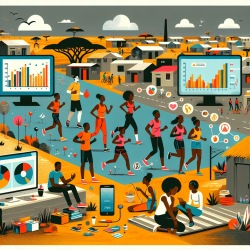Introduction
The challenges faced by adolescents in urban slums of Sub-Saharan Africa (SSA) concerning their sexual and reproductive health and rights (SRHR) are both complex and multifaceted. A recent scoping review titled "Nature of, and responses to key sexual and reproductive health challenges for adolescents in urban slums in sub-Saharan Africa" provides a comprehensive analysis of these issues, highlighting the significant risks and poor outcomes experienced by this demographic. For practitioners, understanding these challenges and leveraging data-driven insights is crucial for developing effective interventions.
Key Findings from the Scoping Review
The review included 54 studies, predominantly quantitative, focusing on adolescents aged 10-19 years. The findings revealed a skew towards studies on sexual behavior and HIV/AIDS, with fewer studies addressing contraception, abortion, gender-based violence (GBV), and other sexually transmitted infections (STIs). The review highlighted the higher risks of poor SRHR outcomes for adolescents in slums compared to their peers in other settlements.
Implications for Practitioners
Practitioners can improve their skills and outcomes by focusing on several key areas identified in the review:
- Comprehensive Sexuality Education: Emphasize education programs that cover a broad range of SRHR topics beyond HIV/AIDS, including contraception, safe sex practices, and consent.
- Targeted Interventions: Develop interventions that address the unique socio-economic and environmental challenges faced by adolescents in slums. This includes creating safe spaces and providing economic empowerment opportunities.
- Community Engagement: Work with community leaders and parents to change cultural norms and beliefs that contribute to risky behaviors and poor SRHR outcomes.
- Qualitative Research: Encourage qualitative studies to gain deeper insights into the experiences and needs of adolescents, which can inform more tailored interventions.
Encouraging Further Research
There is a need for more comprehensive research that includes qualitative methods to explore the socio-cultural dynamics influencing adolescent SRHR. Practitioners should advocate for studies that address the gaps identified in the review, such as the lack of focus on younger adolescents (10-14 years) and the need for interventions that consider the socio-ecological context of slum environments.
Conclusion
Understanding the broader socio-ecological context of slum residence is crucial for developing effective SRHR interventions. By focusing on the unique challenges of urban poverty and leveraging data-driven insights, practitioners can contribute to improved health outcomes for adolescents in these settings.
To read the original research paper, please follow this link: Nature of, and responses to key sexual and reproductive health challenges for adolescents in urban slums in sub-Saharan Africa: a scoping review.










